| Listing 1 - 10 of 16 | << page >> |
Sort by
|
Book
ISBN: 2020580667 9782020580663 Year: 2004 Publisher: Paris Seuil
Abstract | Keywords | Export | Availability | Bookmark
 Loading...
Loading...Choose an application
- Reference Manager
- EndNote
- RefWorks (Direct export to RefWorks)
Philosophical anthropology --- Iconography --- anno 1900-1999 --- anno 1800-1899 --- Metamorphosis in art. --- Human figure in art. --- Body, Human --- Arts, Modern. --- Symbolic aspects. --- Body, Human - Symbolic aspects.
Book
ISBN: 3770537289 9783770537280 Year: 2002 Publisher: München : Fink,
Abstract | Keywords | Export | Availability | Bookmark
 Loading...
Loading...Choose an application
- Reference Manager
- EndNote
- RefWorks (Direct export to RefWorks)
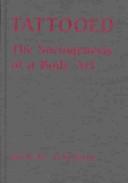
ISBN: 1281994472 9786611994471 1442680369 9781442680364 0802087779 0802085687 9780802087775 9780802085689 0802087779 9780802087775 9781281994479 6611994475 Year: 2003 Publisher: Toronto
Abstract | Keywords | Export | Availability | Bookmark
 Loading...
Loading...Choose an application
- Reference Manager
- EndNote
- RefWorks (Direct export to RefWorks)
"Tattoos have become increasingly popular in recent years, especially among young people. While tattooing is used as a symbol of personal identity and social communication, there has been little sociological study of the phenomenon. In Tattooed: The Sociogenesis of a Body Art, tattoo enthusiasts share their stories about their bodies and tattooing experiences. Michael Atkinson shows how enthusiasts negotiate and celebrate their 'difference' as it relates to the social stigma attached to body art - how the act of tattooing is as much a response to the stigma as it is a form of personal expression - and how a generation has appropriated tattooing as its own symbol of inclusiveness. Atkinson further demonstrates how the displaying of tattooed bodies to others - techniques of disclosure, justification, and representation - has become a part of the shared experience." "Cultural sensibilities about tattooing are discussed within historical context and in relation to broader trends in body modification, such as cosmetic surgery, dieting, and piercing. The author also employs research from a number of disciplines, as well as contemporary sociological and postmodern theory, to analyze the enduring social significance of body art."--Jacket.
Tattooing --- Tattoos (Body markings) --- Body marking --- Ethnology --- Manners and customs --- Permanent makeup --- Social aspects. --- Tattooing. --- Body marking - Philosophy. --- Body image. --- Body, Human - Symbolic aspects. --- Tatouage --- Aspect social --- Body, Human --- Human body --- Philosophy. --- Symbolic aspects.
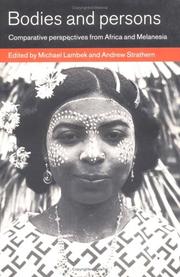
ISBN: 0521621941 0521627370 0511802781 9780521627375 Year: 1998 Publisher: New York Cambridge University press
Abstract | Keywords | Export | Availability | Bookmark
 Loading...
Loading...Choose an application
- Reference Manager
- EndNote
- RefWorks (Direct export to RefWorks)
Large-scale comparisons are out of fashion in anthropology, but this book suggests a bold comparative approach to broad cultural differences between Africa and Melanesia. Its theme is personhood, which is understood in terms of what anthropologists call 'embodiment'. These concepts are applied to questions ranging from the meanings of spirit possession, to the logics of witchcraft and kinship relations, the use of rituals to heal the sick, 'electric vampires', and even the impact of capitalism. There are detailed ethnographic analyses, and suggestive comparisons of classic African and Melanesian ethnographic cases, such as the Nuer and the Melpa. The contributors debate alternative strategies for cross-cultural comparison, and demonstrate that there is a surprising range of continuities, putting in question common assumptions about the huge differences between these two parts of the world.
Human body --- Corps humain --- Social aspects --- Symbolic aspects --- Aspect social --- Aspect symbolique --- #SBIB:39A9 --- Body, Human --- -Body, Human --- Human beings --- Body image --- Human anatomy --- Human physiology --- Mind and body --- Medische antropologie / gezondheid / handicaps --- -Social aspects --- -Symbolic aspects --- -Human body --- -Medische antropologie / gezondheid / handicaps --- -#SBIB:39A9 --- Social Sciences --- Anthropology --- Body, Human - Social aspects - Melanesia - Congresses --- Body, Human - Social aspects - Africa - Congresses --- Body, Human - Symbolic aspects - Africa - Congresses --- Body, Human - Symbolic aspects - Melanesia - Congresses
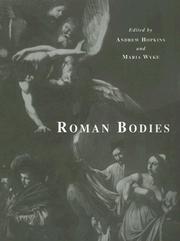
ISBN: 0904152448 9780904152449 Year: 2005 Publisher: London British School at Rome
Abstract | Keywords | Export | Availability | Bookmark
 Loading...
Loading...Choose an application
- Reference Manager
- EndNote
- RefWorks (Direct export to RefWorks)
Human anatomy --- Iconography --- Rome --- Body, Human --- Human figure in art --- Human beings in art --- Dead in art --- Art, Roman --- Art, Italian --- Art --- History --- Social aspects --- Symbolic aspects --- Antiquities --- Body, Human - Rome - History --- Body, Human - Social aspects - Rome --- Body, Human - Symbolic aspects - Rome --- Art, Roman - History --- Art, Italian - Italy - Rome --- Art - Italy - Rome - History --- Roma --- Corps humain --- Rome - Antiquities
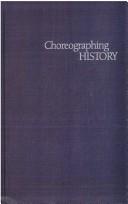
ISBN: 0253324114 0253209358 9780253209351 Year: 1995 Volume: *1 Publisher: Bloomington ; Indianapolis Indiana University Press
Abstract | Keywords | Export | Availability | Bookmark
 Loading...
Loading...Choose an application
- Reference Manager
- EndNote
- RefWorks (Direct export to RefWorks)
Such an interdisciplinary moment came to pass at the conference titled "Choreographing History", held at the University of California in February 1992, out of which the essays in this volume were generated. The conference brought together historians of the arts, science, sexuality, and history to discuss the projet of writing about the body and its movement. Focus on body as an analytic category, in the organization of this conference and in current critical theory, brings into sharp relief theoretical concerns in the writing of history. Body as a subjet of scholarly inquiry also invites participation across disciplines and from various constituencies who previously have found little common ground
Recreation. Games. Sports. Corp. expression --- Theatrical science --- Dance --- Historiography. --- Human body --- Social aspects. --- Symbolic aspects. --- Body, Human --- Criticism [Historical ] --- Critique historique --- Geschiedkundige methodologie --- Geschiedschrijving --- Geschiedschrijving--Methodologie --- Historical criticism --- Historical method --- Historical methodology --- Historiografie --- Historiographie --- Historiography --- Historische kritiek --- Historische methode --- Historische methodologie --- History--Criticism --- Kritiek [Historische ] --- Methodologie [Historische ] --- Methodology [Historical ] --- Social aspects --- Symbolic aspects --- Body, Human - Social aspects. --- Body, Human - Symbolic aspects. --- Dance - Social aspects.
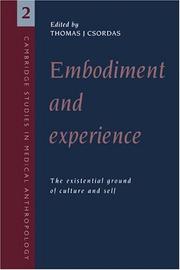
ISBN: 0521452562 0521458900 9780521452564 9780521458900 Year: 1994 Volume: 2 Publisher: Cambridge Cambridge University Press
Abstract | Keywords | Export | Availability | Bookmark
 Loading...
Loading...Choose an application
- Reference Manager
- EndNote
- RefWorks (Direct export to RefWorks)
Students of culture have been increasingly concerned with the ways in which cultural values are 'inscribed' on the body. These essays go beyond this passive construal of the body to a position in which embodiment is understood as the existential condition of cultural life. From this standpoint embodiment is reducible neither to representations of the body, to the body as an objectification of power, to the body as a physical entity or biological organism, nor to the body as an inalienable centre of individual consciousness. This more sensate and dynamic view is applied by the contributors to a variety of topics, including the expression of emotion, the experience of pain, ritual healing, dietary customs, and political violence. Their purpose is to contribute to a phenomenological theory of culture and self - an anthropology that is not merely about the body, but from the body.
Philosophical anthropology --- Psychiatry --- Human body --- Medical anthropology. --- Corps humain --- Anthropologie médicale --- Social aspects --- Symbolic aspects --- Aspect social --- Aspect symbolique --- Body, Human --- Medical anthropology --- #SBIB:39A9 --- Medische antropologie / gezondheid / handicaps --- Social aspects. --- Symbolic aspects. --- Anthropologie médicale --- Medical care --- Medicine --- Anthropology --- Symbolic aspects of the human body --- Symbolism --- Anthropological aspects --- Body, Human - Social aspects --- Body, Human - Symbolic aspects
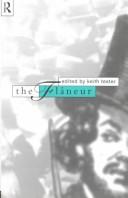
ISBN: 0415121396 0415121388 9780415121392 9780415121385 Year: 1996 Publisher: London Routledge
Abstract | Keywords | Export | Availability | Bookmark
 Loading...
Loading...Choose an application
- Reference Manager
- EndNote
- RefWorks (Direct export to RefWorks)
The contributors look at bodies engaged in practices as varied as pageantry, physical education, festivals and exhibitions, tourism, and social and theatrical dance. They succeed in bringing these bodies to life with all the political, gendered, radical, and aesthetic resonances of which bodily motion is capable. Dance is used in this volume as a theorical framework to assist the reader in understanding the body's permanent transience, and in the task of transposing its movements into words and its choreography into theory
Recreation. Games. Sports. Corp. expression --- Body, Human --- Dance --- Social aspects. --- Symbolic aspects. --- #SBIB:39A5 --- #SBIB:316.7C211 --- Kunst, habitat, materiële cultuur en ontspanning --- Cultuursociologie: dans --- Human body --- Symbolic aspects of the human body --- Symbolism --- Dance and society --- Dancing and society --- Society and dance --- Social aspects --- Symbolic aspects --- Body, Human - Social aspects. --- Body, Human - Symbolic aspects. --- Dance - Social aspects.
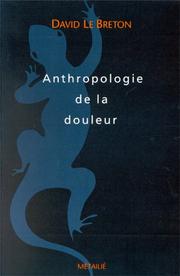
ISSN: 02914387 ISBN: 2864241919 9782864241911 Year: 1995 Publisher: Paris: Métailié,
Abstract | Keywords | Export | Availability | Bookmark
 Loading...
Loading...Choose an application
- Reference Manager
- EndNote
- RefWorks (Direct export to RefWorks)
La douleur est le premier mobile de la consultation médicale, elle est le signe qui ne trompe plus personne sur la nécessité d'un soulagement. Pourtant, même si la pratique médicale est souvent évoquée dans ce texte, le regard porte plutôt sur l'homme souffrant. David Le Breton aborde la douleur sur un plan anthropologique et analyse la relation que l'homme entretient avec elle tout en le situant dans la trame sociale et culturelle qui le baigne et lui donne ses valeurs et l'orientation de ses conduites. Cet ouvrage constitue un nouveau chapitre de l'anthropologie du corps, où la douleur joue le rôle d'un analyseur fécond pour saisir la dimension symbolique de la relation de l'homme à son corps.
Body --- Pain --- Corps --- Douleur --- Anthropological aspects --- Aspect anthropologique --- Body, Human --- Grief --- Sadness --- Social aspects --- Symbolic aspects --- Grief. --- Human body --- Sadness. --- Social aspects. --- Symbolic aspects. --- Mourning --- Sorrow --- Bereavement --- Emotions --- Loss (Psychology) --- Dejection --- Gloominess --- Tristitia --- Deadly sins --- Depression, Mental --- Melancholy --- Symbolic aspects of the human body --- Symbolism --- Body, Human - Social aspects --- Body, Human - Symbolic aspects --- ANTHROPOLOGIE CULTURELLE --- DOULEUR --- EUROPE --- PERCEPTION --- HISTOIRE
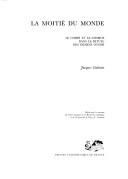
ISBN: 2130487556 9782130487555 Year: 1997 Publisher: Paris : Presses universitaires de Paris,
Abstract | Keywords | Export | Availability | Bookmark
 Loading...
Loading...Choose an application
- Reference Manager
- EndNote
- RefWorks (Direct export to RefWorks)
Otomi Indians --- Otomi (Indiens) --- Religion and mythology --- Rites and ceremonies --- Religion et mythologie --- Rites et cérémonies --- Otomi mythology. --- Body, Human --- Rites and ceremonies. --- Psychology. --- Social aspects --- Symbolic aspects --- Rites et cérémonies --- Otomi Indians - Rites and ceremonies. --- Otomi Indians - Psychology. --- Body, Human - Social aspects - Mexico. --- Body, Human - Symbolic aspects - Mexico. --- Corps humain --- Otomí (Indiens) --- Cosmogonie indienne --- Aspect religieux --- Religion --- Religion and mythology.
| Listing 1 - 10 of 16 | << page >> |
Sort by
|

 Search
Search Feedback
Feedback About UniCat
About UniCat  Help
Help News
News